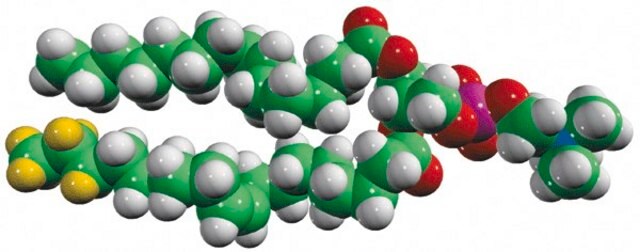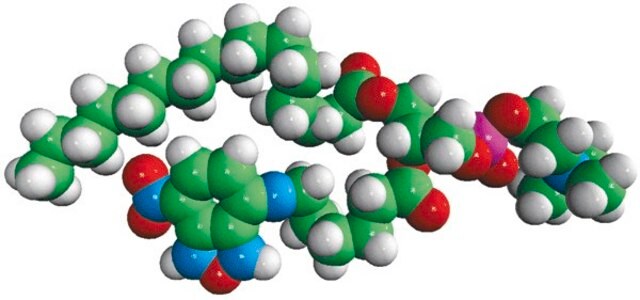857228P
Avanti
C18 LPA
1-O-octadecyl-2-hydroxy-sn-glycero-3-phosphate (ammonium salt), powder
Synonym(s):
1-octadecyl-sn-glycero-3-phosphate (ammonium salt); PA(18:0e/0:0)
About This Item
Recommended Products
Assay
>99% (LPA; may contain up to 10% of the 2-LPA isomer)
form
powder
packaging
pkg of 1 × 1 mg (857228P-1mg)
manufacturer/tradename
Avanti Research™ - A Croda Brand 857228P
lipid type
phospholipids
cardiolipins
shipped in
dry ice
storage temp.
−20°C
SMILES string
O[C@](COP([O-])(O)=O)([H])COCCCCCCCCCCCCCCCCCC.[NH4+]
General description
Application
- to study its effects on Yes-associated protein (YAP) phosphorylation
- as a standard for the quantification of lysophosphatidic acid (LPA) compounds in proton samples using reversed-phase ultra-performance liquid chromatography-tandem mass spectrometer (UPLC-MS/MS)
- as a substrate to investigate the phosphatase activity of soluble epoxide hydrolase (sEH) towards LPA compounds
Biochem/physiol Actions
Packaging
Legal Information
Storage Class Code
11 - Combustible Solids
WGK
WGK 3
Certificates of Analysis (COA)
Search for Certificates of Analysis (COA) by entering the products Lot/Batch Number. Lot and Batch Numbers can be found on a product’s label following the words ‘Lot’ or ‘Batch’.
Already Own This Product?
Find documentation for the products that you have recently purchased in the Document Library.
Our team of scientists has experience in all areas of research including Life Science, Material Science, Chemical Synthesis, Chromatography, Analytical and many others.
Contact Technical Service








